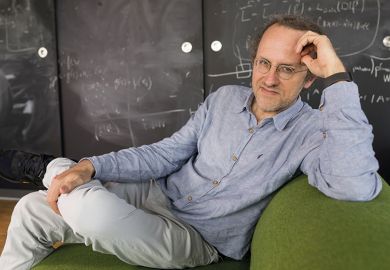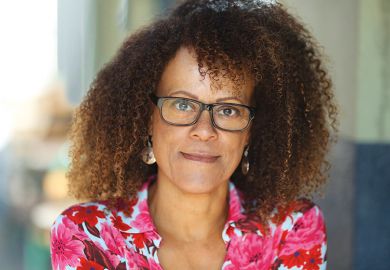Aanchal Malhotra is a writer, oral historian and artist based in New Delhi. She is nominated for this year’s Nayef Al-Rodhan Prize, awarded annually by the British Academy to a non-fiction book that promotes global cultural understanding, for her work on the partition of India, Remnants of Partition: 21 Objects from a Continent Divided. She studied at the Ontario College of Art and Design University, Toronto, and Concordia University, Montreal, and is also the co-founder of the Museum of Material Memory.
Where and when were you born?
Delhi, 1990.
How has this shaped you?
Living in Delhi can be a sensorial overload, with people, traffic, sounds, smells and the many traditions and customs of its inhabitants; but it has made me resilient. The city’s grit, frenzy and noise have become my armour. It is a city of history and has given me tangible access into the past.
What was it like moving to study in Canada?
Moving there at the age of 17 completely opened my world. I had been raised in a rather sheltered environment. My time in Toronto and Montreal shaped the way I thought and made me appreciate family and the sacrifices they made for me to be there. However, the main thing was that being in Canada made me fall in love with India, perhaps properly, for the first time.
What kind of student were you?
A diligent one; I took classes quite seriously. I am a creature of habit; I function best in routine. I remember being the first one in the studio in the morning and the last one out at night.
What made you decide to study the material remains of the partition?
The moment I realised that memory could settle within objects, I began thinking about whether objects could be receptacles for trauma. Memory hides in the folds of clothes, inside boxes of inherited jewellery, between the yellowing pages of old books, in the cracks of furniture and the stitches of embroidered handkerchiefs. It merges into our surroundings, it remains quiet, and can manifest itself in the most unlikely scenarios, generations later.
How does your book relate to India today?
Remnants of Partition is about objects and heirlooms, the things we inherit, which carry history within them but also have witnessed history. The object becomes the link between the past and the present, and in that way, it makes a historic event such as the partition, relatable today. Conversations around an object can bridge the generational gap within families. The lingering consequences of partition are very real and are felt today, not just in politics, but also in the social fabric of the country.
How did it feel to be shortlisted for the Al-Rodhan Prize?
It felt incredible, and quite surreal. It is an honour to be recognised by such a prestigious institution. What makes me happiest is [to know] that the voices of people I interviewed, most of whom had remained silent for nearly 70 years, would now be heard and read by the world.
How easy is it to switch between your roles as artist, oral historian and writer?
I couldn’t have written the kind of book I did if I wasn’t an artist. During field research interviews, I’d let my recorder tape the voices of people, and in my notebook I’d write down what their hands did, how their bodies moved, how their voice lilted, when they switched language, or the colour of the light and the warmth of the day. I have an artist’s eye, and I cannot shed that.
What divided your life into a ‘before’ and ‘after’?
The fieldwork for Remnants. For years, I travelled across India, Pakistan and England listening to people narrate their stories. I had to unlearn so many ingrained and often latent biases and learn a new vocabulary and way of living that attempted to not discriminate anyone’s histories and experiences on the basis of nationality, religion, ethnicity, language or caste. It is very difficult – I struggle with it every day – but it is not impossible.
Tell us about the Museum of Material Memory.
The museum is a digital repository set up in 2017 in partnership with my friend Navdha Malhotra (our shared surname is coincidental). It encourages people across the subcontinent to write short stories about objects that have been passed down in their families. We want to create an archive of artefacts that on one level are personal and familial but on another can serve as collective material history for the subcontinent and its diaspora.
What keeps you awake at night?
Whatever I am writing. If I’ve been working on something that day, it will follow me to bed and force me to remain awake until I have either made notes, voice notes or scrambled to my computer and jotted something down.
What advice would you give to prospective art students or oral historians?
Read, peruse and absorb as much of your environment as intimately as you can. For oral historians, fieldwork is essential. Listening to the stories of people in the languages they speak, on the lands that they live, through the histories that they have carved, provides the most important element that one can bring into a work of oral history – which is empathy.
What do you do for fun?
I clean. It’s rather embarrassing, but some of the things that bring me great joy are cleaning the bookshelves, organising the cupboards and colour-coding my wardrobe. It makes me feel calm.
How would you like to be remembered?
As someone who attempted to be borderless in her work; who was convinced that through continuous and engaging conversations among common people, one day even the most impenetrable borders – in my case, between India and Pakistan – might not feel so definite.
anna.mckie@timeshighereducation.com
Appointments
Nic Smith has been appointed provost of Queensland University Technology. He is currently dean of engineering at the University of Auckland and previously served as head of biomedical engineering at King’s College London, and professor of computational physiology at the University of Oxford. Professor Smith will be responsible for QUT’s academic activities and will represent the institution globally in his new role, which he will start next March. He will replace Carol Dickenson, who will retire at the end of this year. Margaret Sheil, QUT’s vice-chancellor, said Professor Smith would “provide intellectual and strategic leadership, direction and evaluation for all QUT’s academic activities”. QUT has also announced Xiaoling Liu, a former chief executive of Rio Tinto Minerals, as chancellor.
Andrew Livingston has been named vice-principal (research and innovation) at Queen Mary University of London. Professor Livingston will join Queen Mary next month from Imperial College London, where he was professor of chemical engineering. Professor Livingston was head of Imperial’s department of chemical engineering between 2008 and 2016 and was interim director of the Rosalind Franklin Institute between January and May this year. Colin Bailey, Queen Mary’s principal, said Professor Livingston “offers exceptional research and leadership credentials, with the personality and track record to bring about a transformational change to research infrastructure and environment at Queen Mary”.
Ehsan Mesbahi has been named pro vice-chancellor of the faculties of science, engineering, architecture and design at Victoria University of Wellington. He will move to New Zealand next year from the University of the West of Scotland, where he is vice-principal and pro vice-chancellor (academic).
Raj Jethwa has been announced as the new chief executive of the UK’s Universities and Colleges Employers Association. He is currently director of policy at the British Medical Association, and will join Ucea next February.
Register to continue
Why register?
- Registration is free and only takes a moment
- Once registered, you can read 3 articles a month
- Sign up for our newsletter
Subscribe
Or subscribe for unlimited access to:
- Unlimited access to news, views, insights & reviews
- Digital editions
- Digital access to THE’s university and college rankings analysis
Already registered or a current subscriber?




